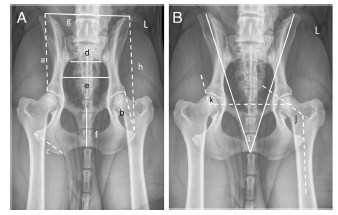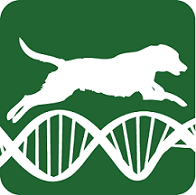Authors: Mark J. Fealey1, Joy Li2, Rebel J. E. Todhunter1, Ursula Krotscheck1, Kei Hayashi1, Marina J. McConkey1, Adam R. Boyko2,3, Jessica J. Hayward2,3 and Rory J. Todhunter1,3*
 Donate
DonateDid you find our content interesting or helpful? Help support the IPFD enhance health, well-being and welfare for dogs everywhere.

Authors: Mark J. Fealey1, Joy Li2, Rebel J. E. Todhunter1, Ursula Krotscheck1, Kei Hayashi1, Marina J. McConkey1, Adam R. Boyko2,3, Jessica J. Hayward2,3 and Rory J. Todhunter1,3*
 Fealey et al. Canine Genetics and Epidemiology
Fealey et al. Canine Genetics and Epidemiology
(2017) 4:4
DOI 10.1186/s40575-017-0043-7
Plain English Summary
"Concentrated breeding effort to produce various body structures and behaviors to suit human demand has inadvertently produced unwanted traits and diseases that accompany the external appearance and behavior of dogs. Purebred dogs, which are predisposed, or not, to HD share common features of their shape and size, respectively.
Thirteen unique anatomical features of the pelvis were measured on radiographs of 392 dogs of 51 breeds and 95 mixed breed dogs. Combinations of these measurements together described the shape and size of the pelvis. Male dogs had significantly larger pelves than female dogs. Genetic markers pointed to insulin-like growth factor-1 as a major driver of pelvic size. A second genetic marker was associated with ilial length and ischial width on canine chromosome 16.
Conclusion: Based on the current study, pelvic shape alone was not strongly associated with canine hip dysplasia."
Edited by Ann Milligan
By using this site, you agree to our Terms of Use.
Recommended Comments
There are no comments to display.
Join the conversation
You can post now and register later. If you have an account, sign in now to post with your account.
Note: Your post will require moderator approval before it will be visible.